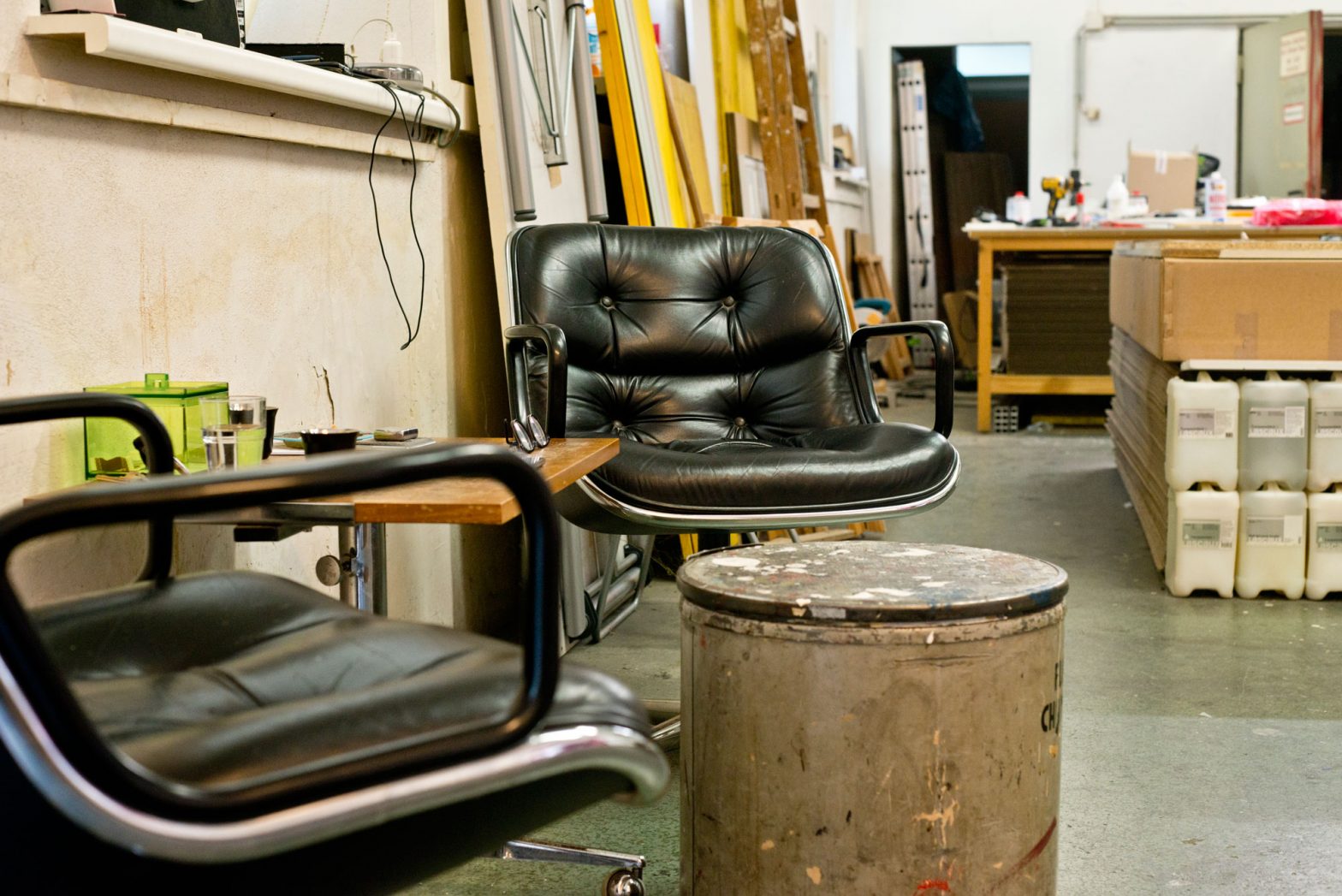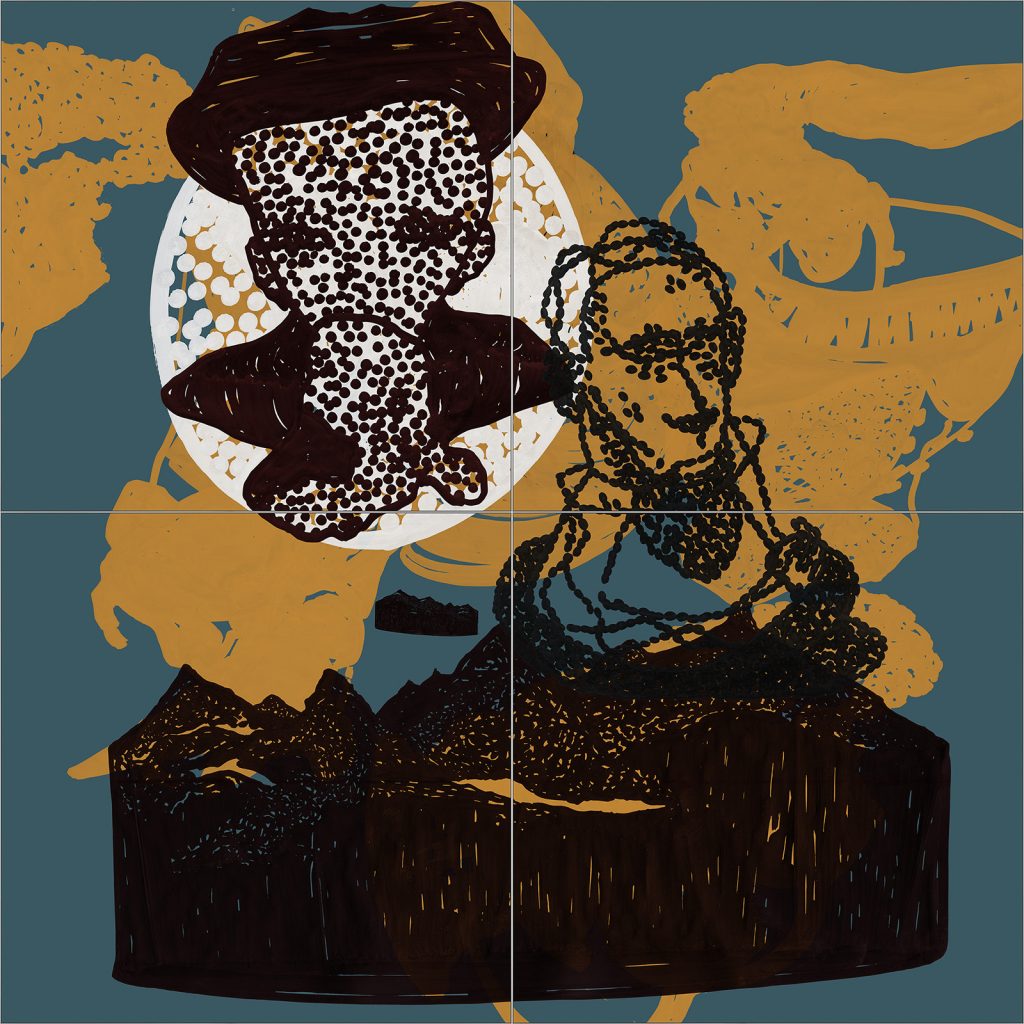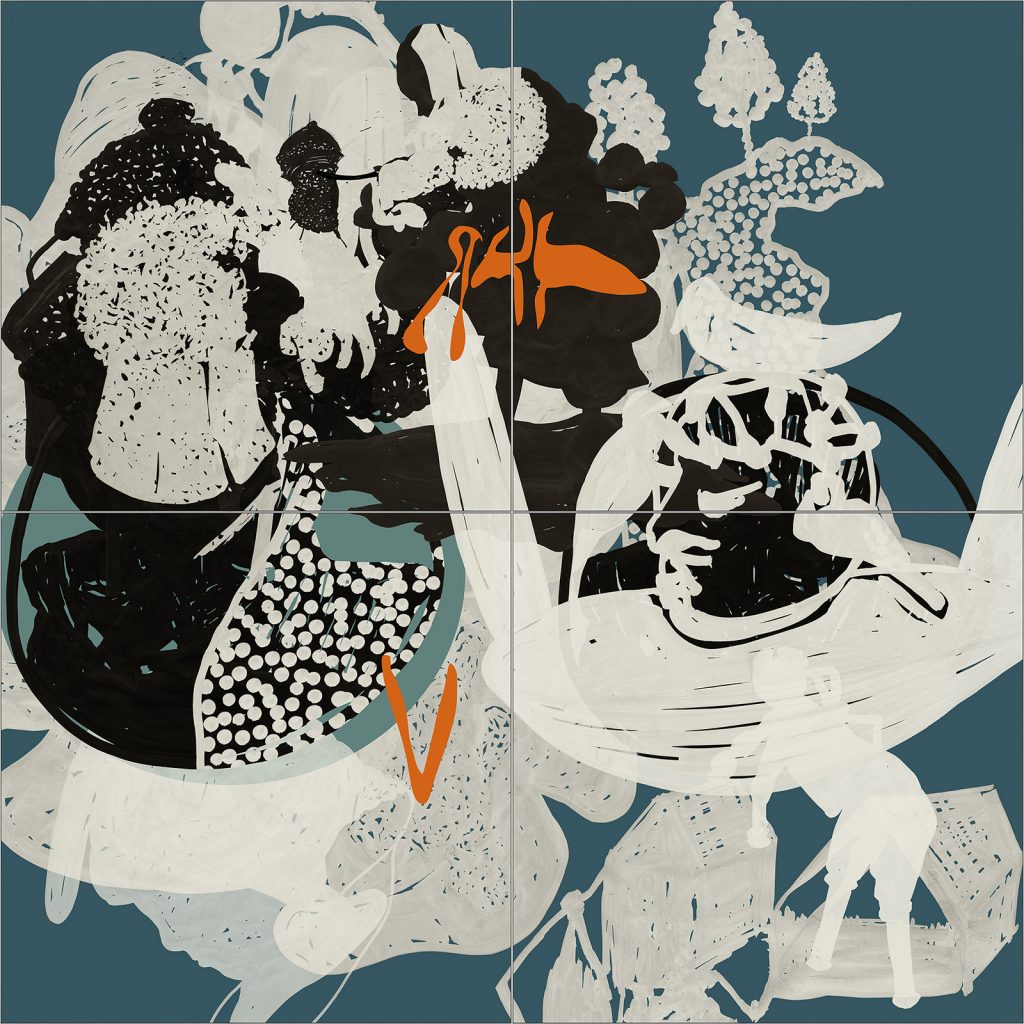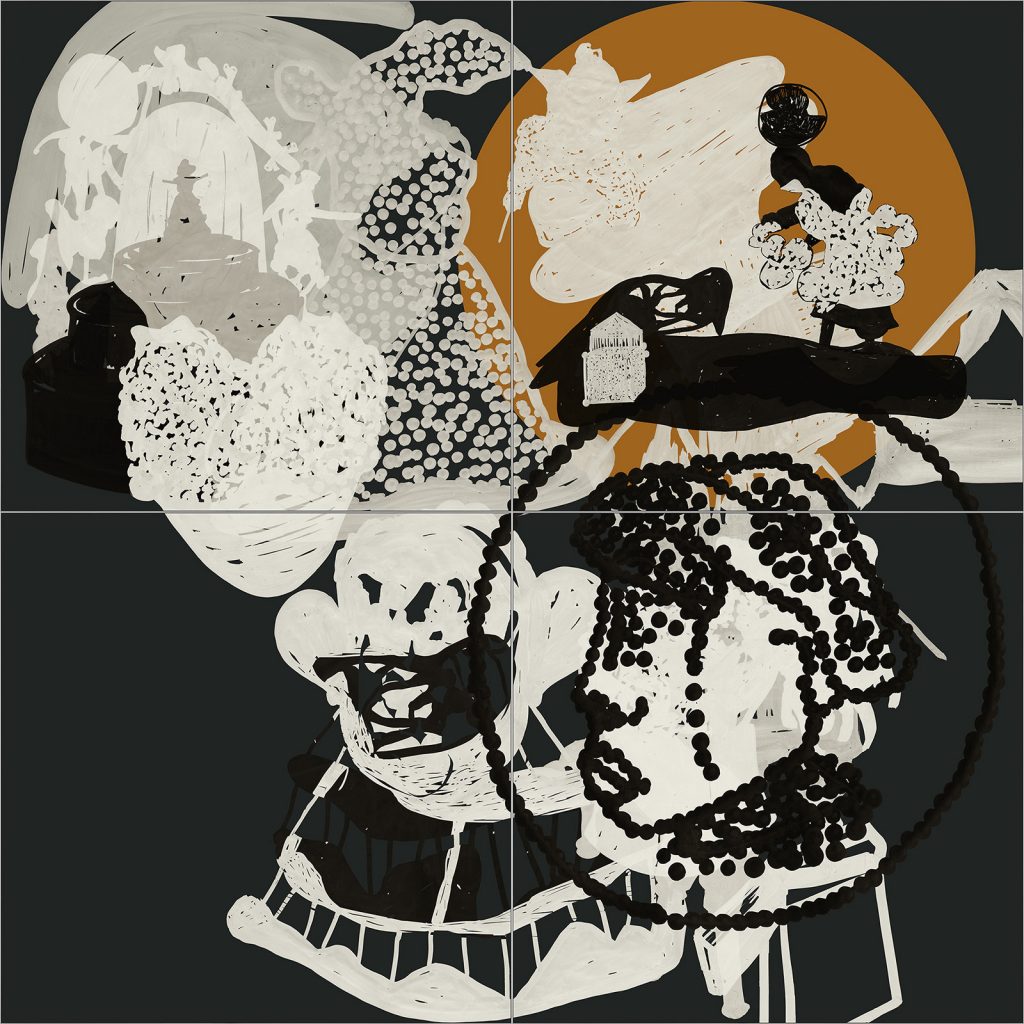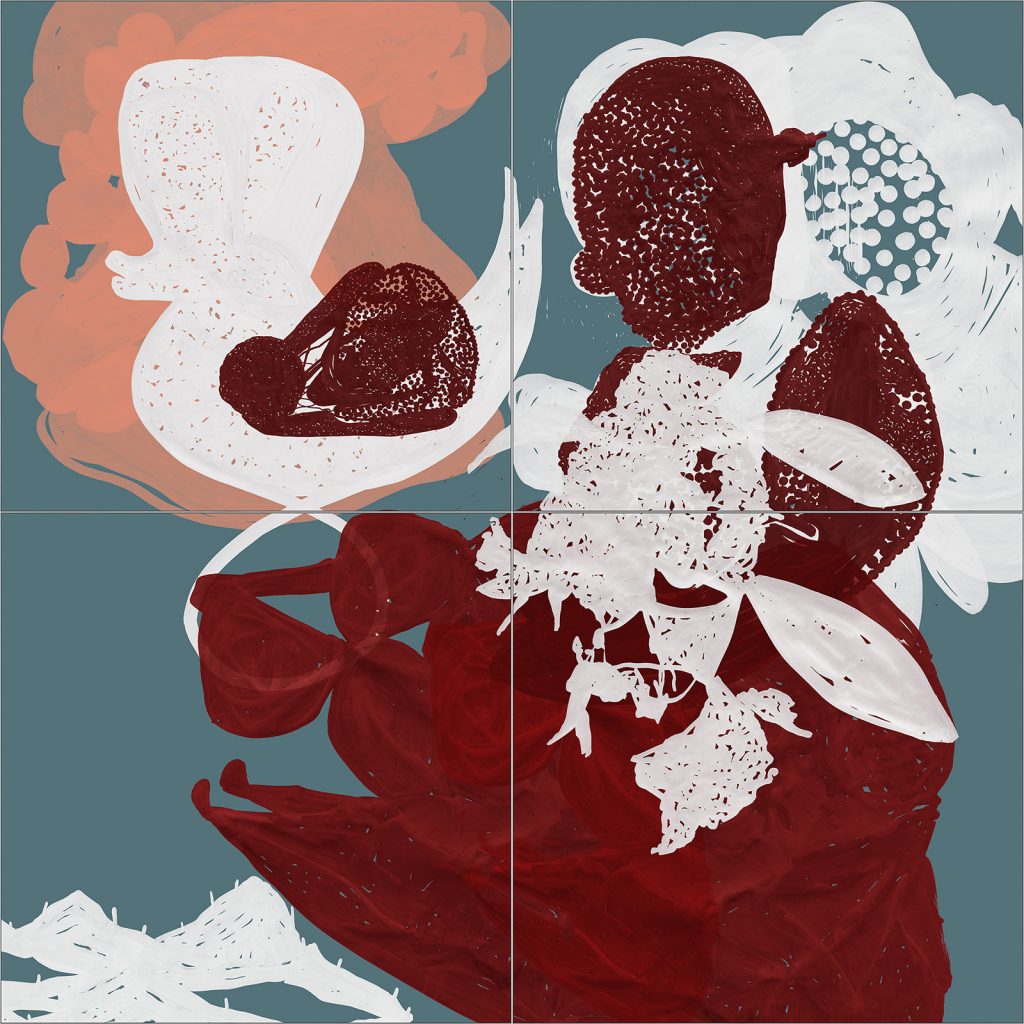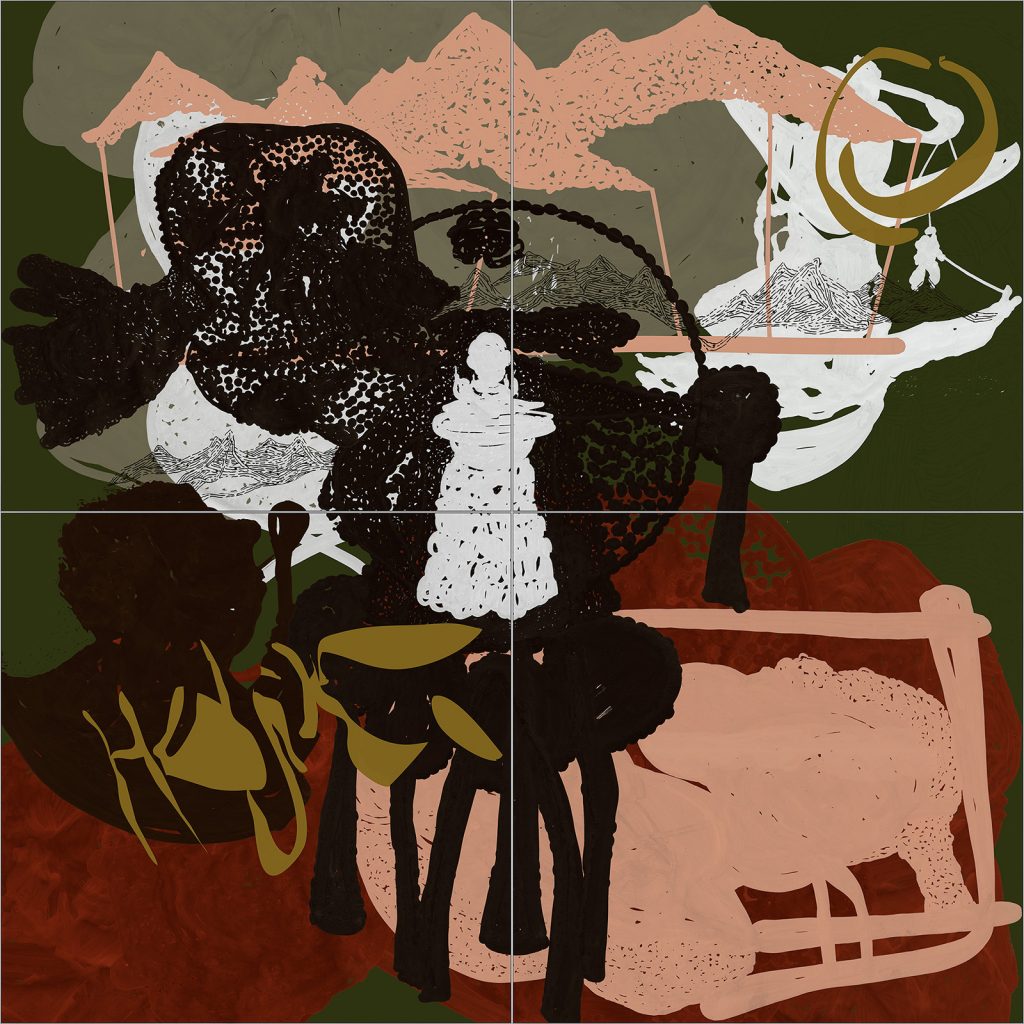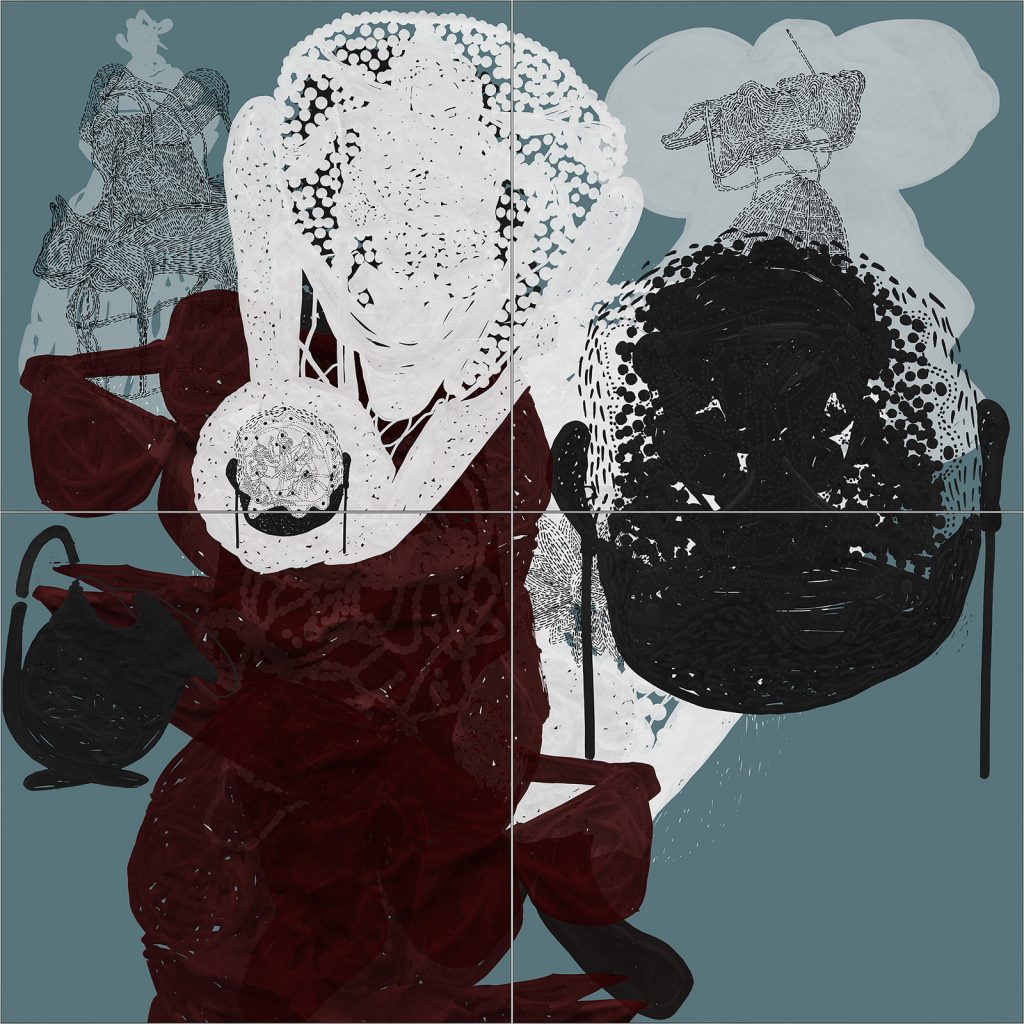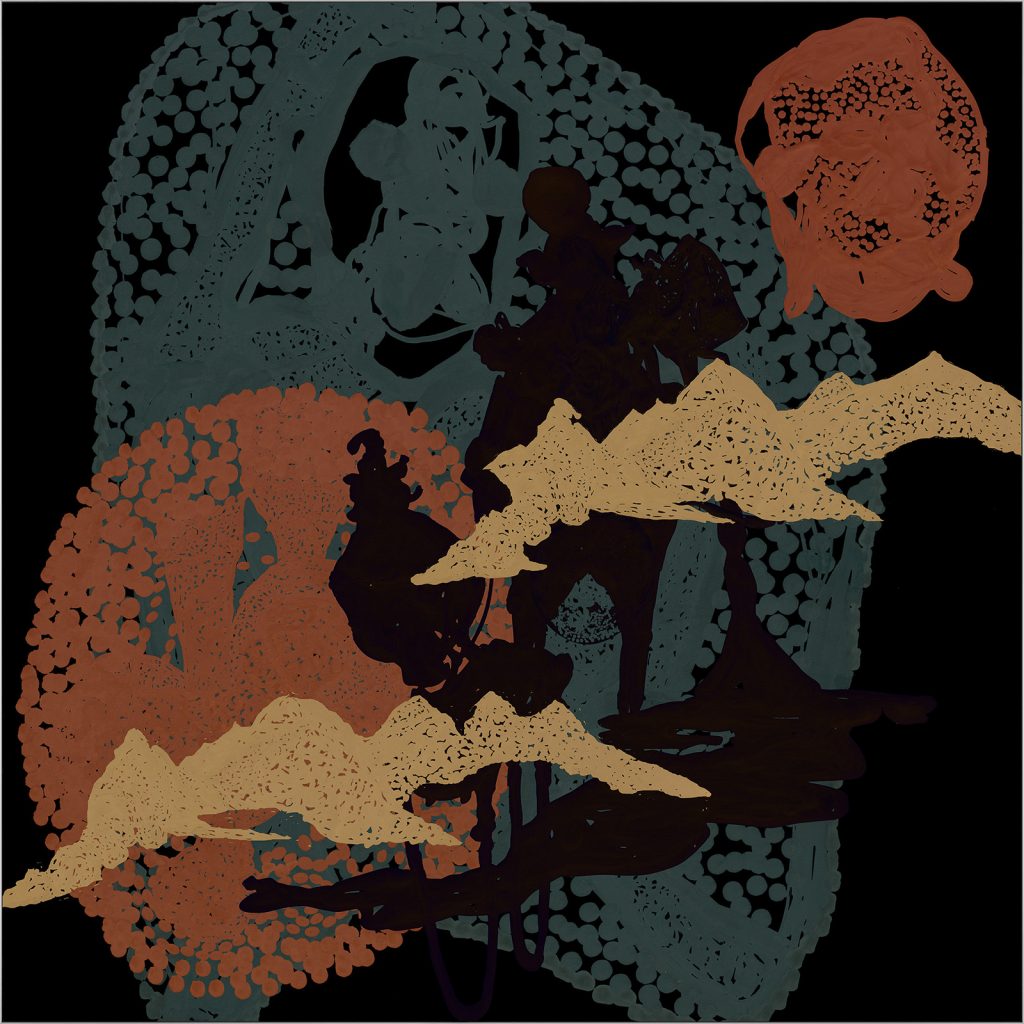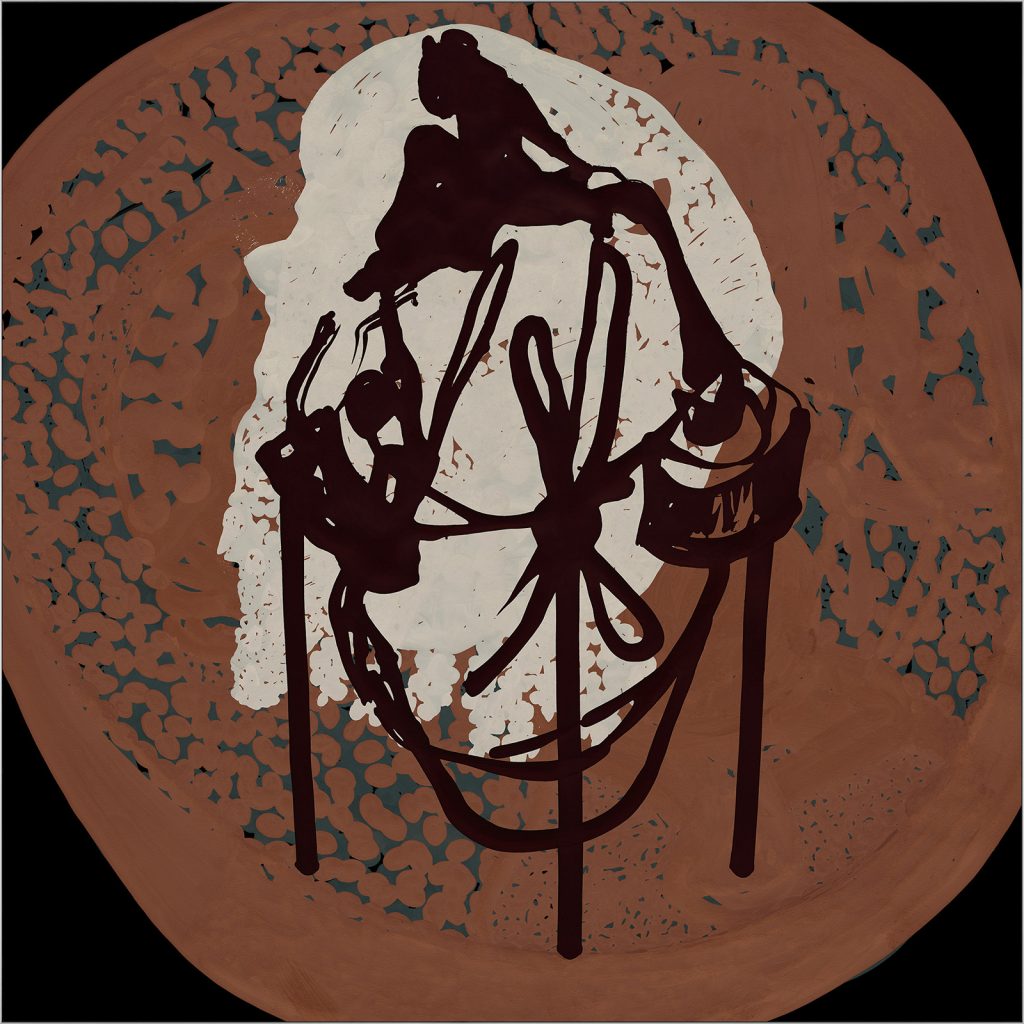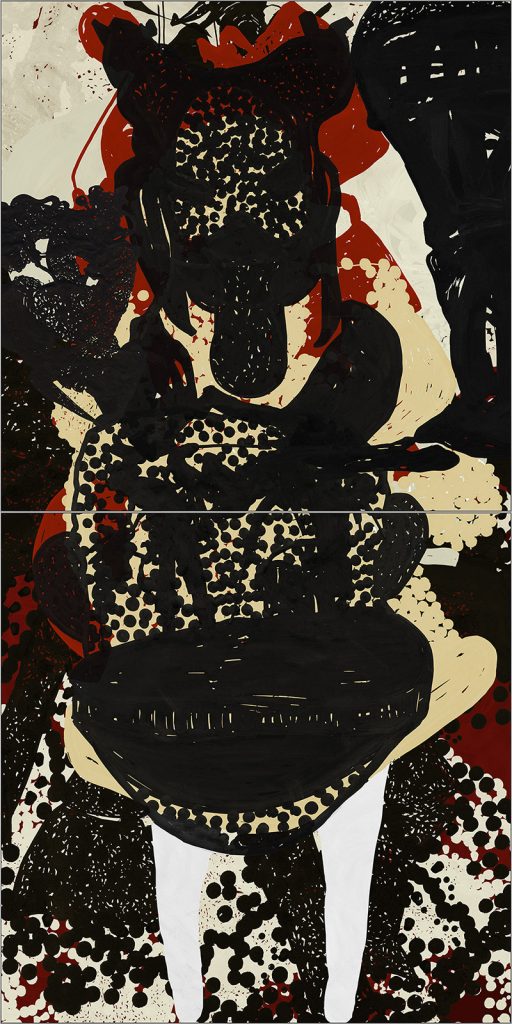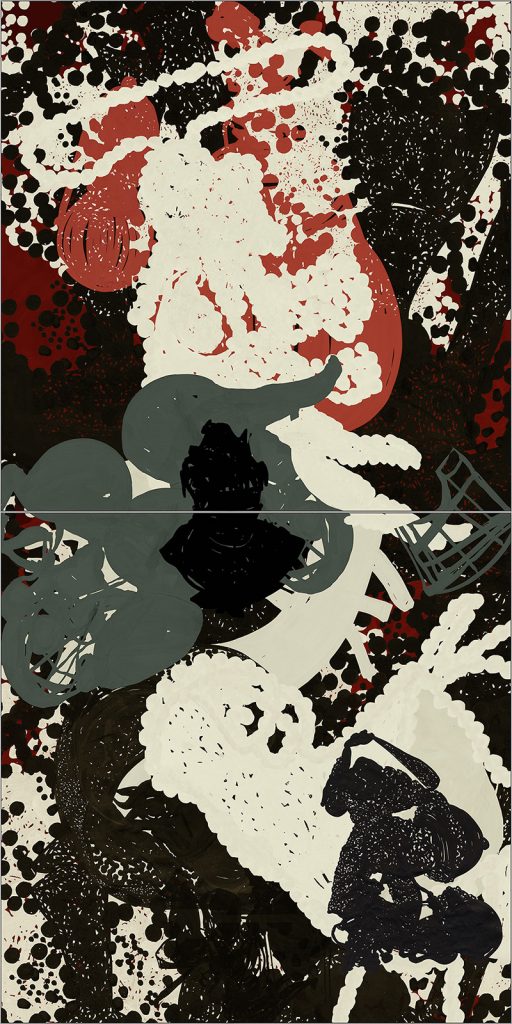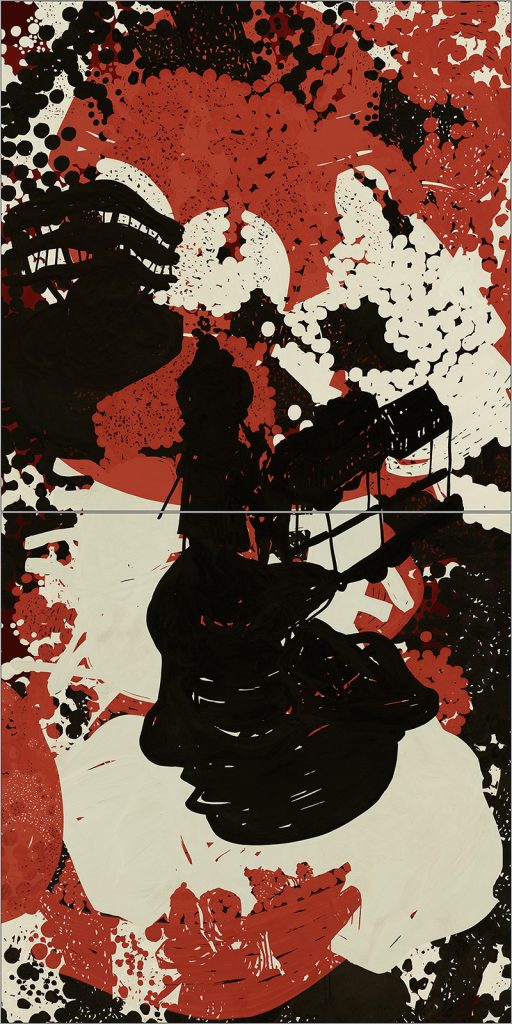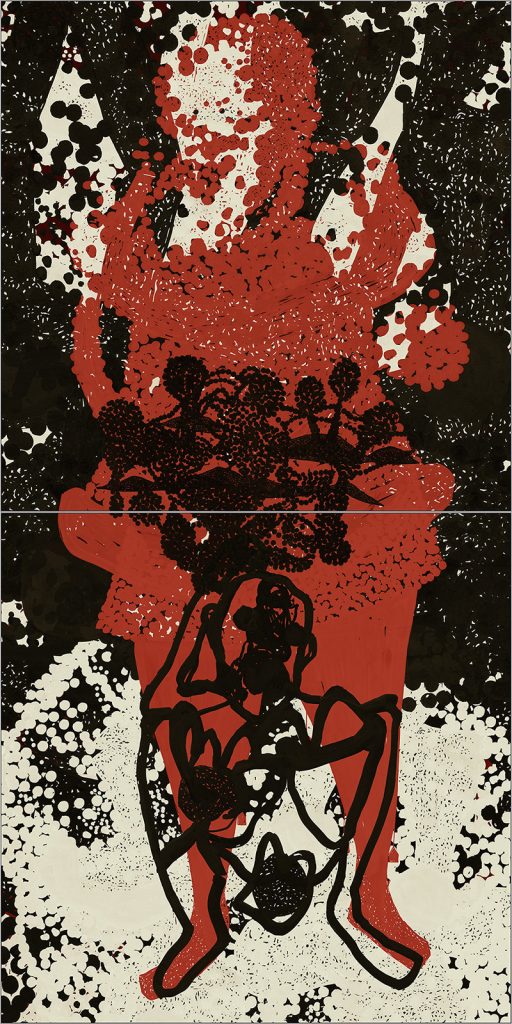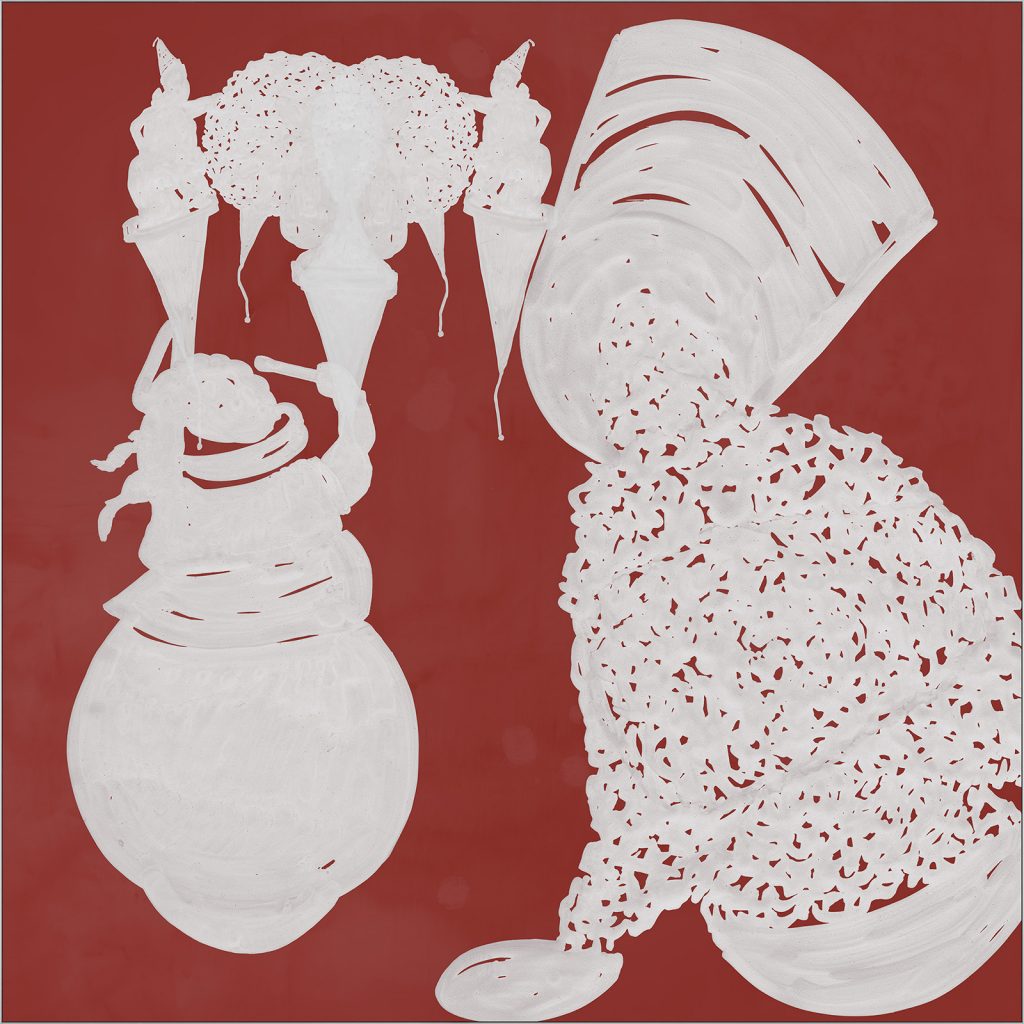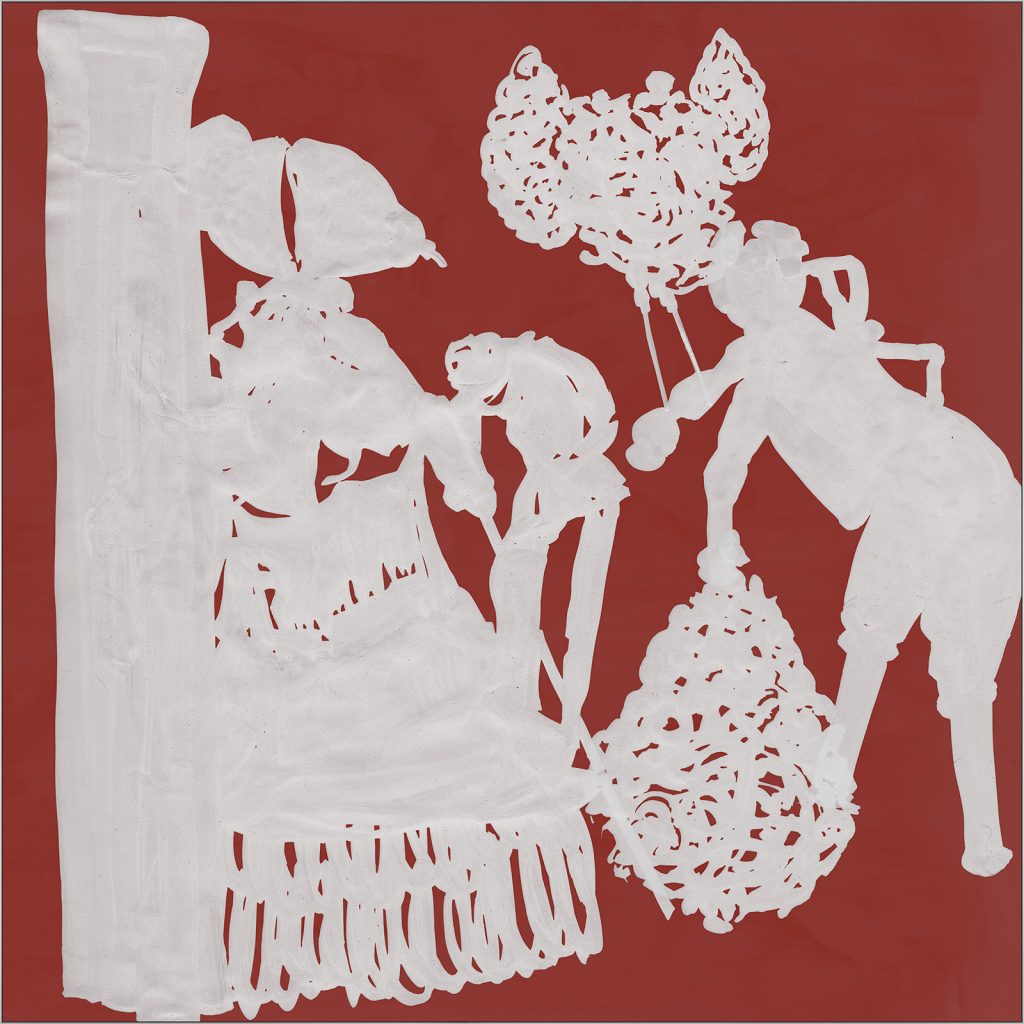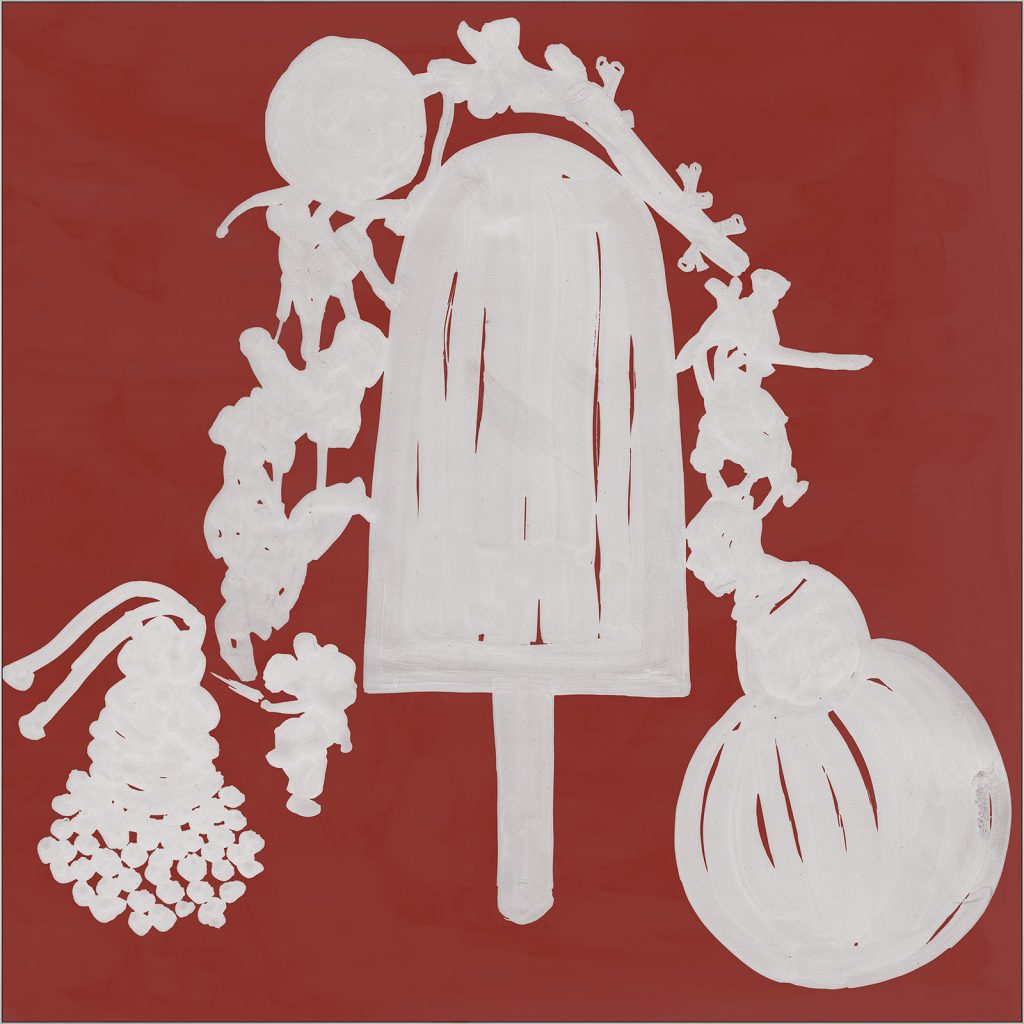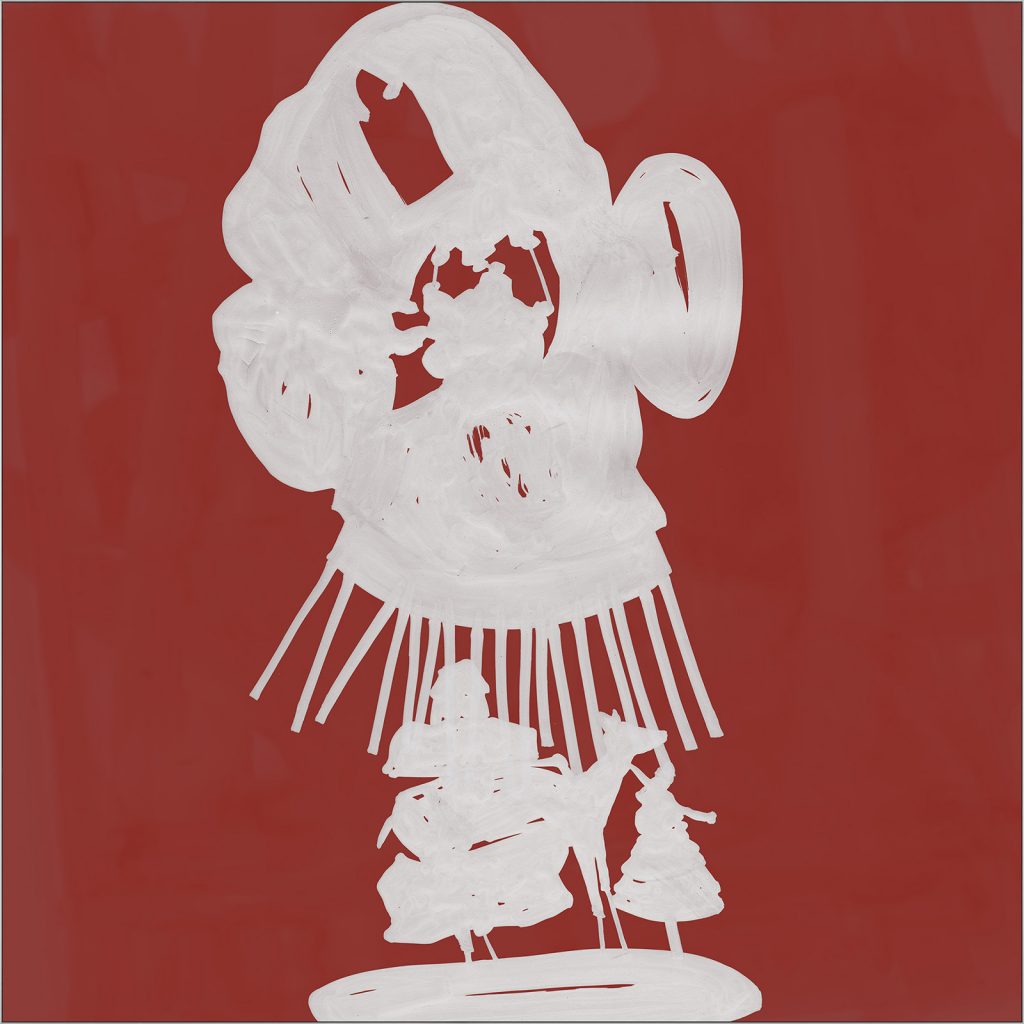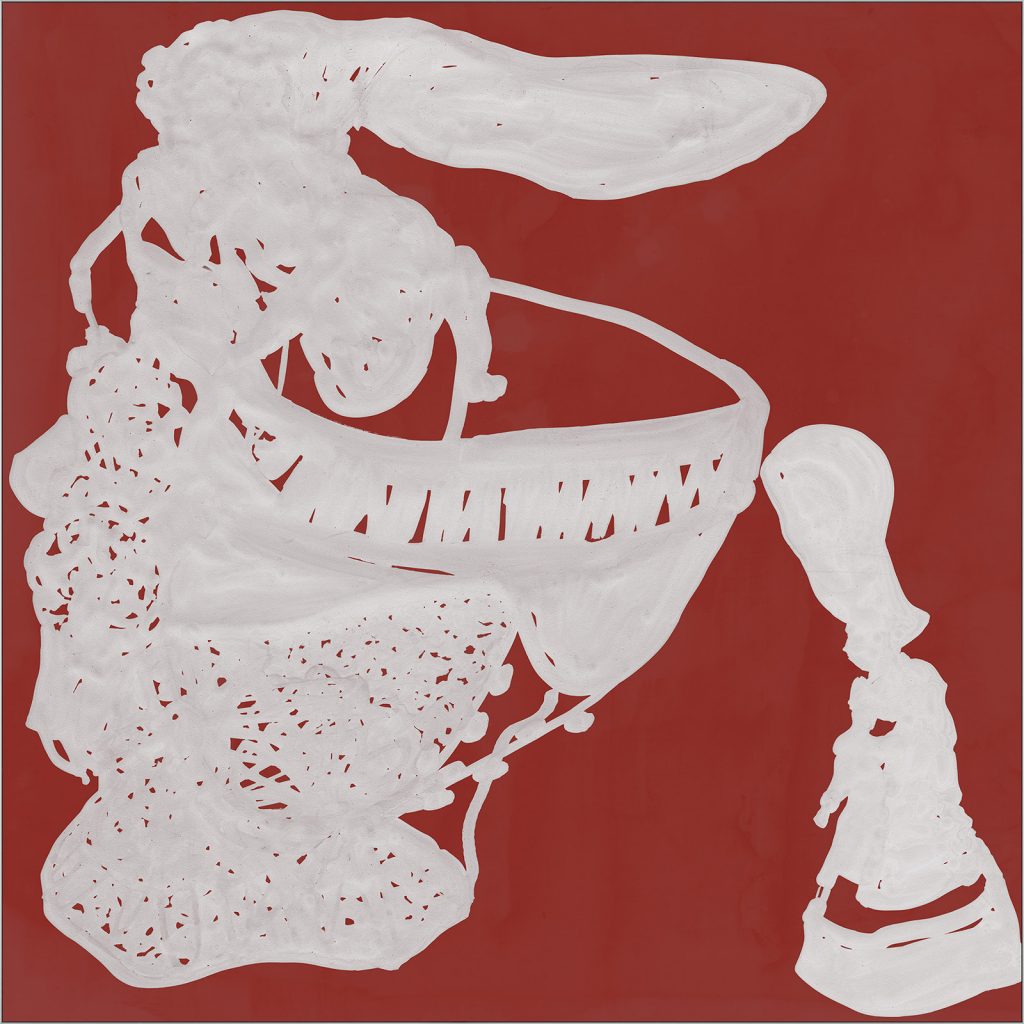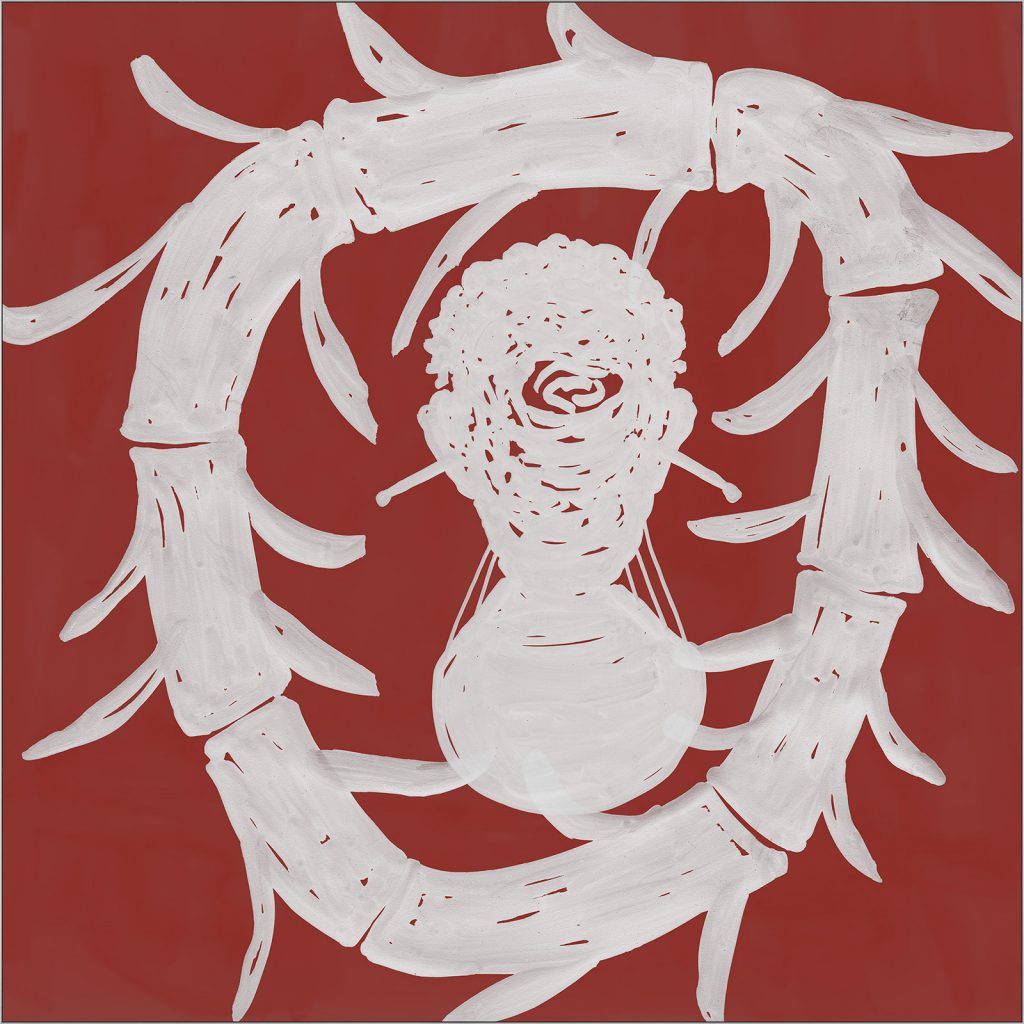Oliver Dorfer, storyboard: njord / 7.11.2019, Galerie Hilger—Brot
The flow of images
The work of Oliver Dorfer occupies a striking and highly contemporary position in current painting. However, initially its reception is as problematic as it is fruitful.
The eyes are confronted by a clear image, but its message is undecipherable. What is the reason? Am I viewing it from a false perspective? There are identifiable entities and forms, but also inexplicable elements that defy recognition. The brain instantly wishes to begin reading the “story” of the picture, but then immediately stops because no further progress is possible owing to the fact that one element is not followed, clarified or continued by the next in conventional, sequential fashion. Indeed, the question arises as to whether or not an interwoven narration actually exists.
This hybrid composed of the representational and the abstract engenders uncertainty. Here someone is travelling along a new path, but where does it lead? This sense of misgiving is further heightened by a sensation of extreme coldness and self-assuredness. This work possesses an inherent, clean and technoid-like character with a surface, which at least to begin with, partially repels an empathic approach.
However, when confronted by persistent interest this apparent impregnation is unable to endure. The dimensions and smoothness of the works, their several or multipartite nature, the formal blend of the objective and the abstract, not to mention the subdued colouration, irritate the eye and start to mislead one into the false expectation of a straightforward, logical message. Excerpts from diverse realities intermingle and are employed as fragments and components to create a further reality, that of Dorfer, or to be more accurate, one of his.
This latest series, “storyboard: njord 1”, offers insights into a variety of realities and with these eight large, multi-sectional works and two simple images, Dorfer’s oeuvre reaches a new pinnacle. “Njord” can be understood as a word creation that in its tonality is redolent of the North and fjords. However, in fact Njord is a name that derives from the panoply of Norse deities and offers a range of differing relational references, which include a second kingship after Odin, the father of the gods.
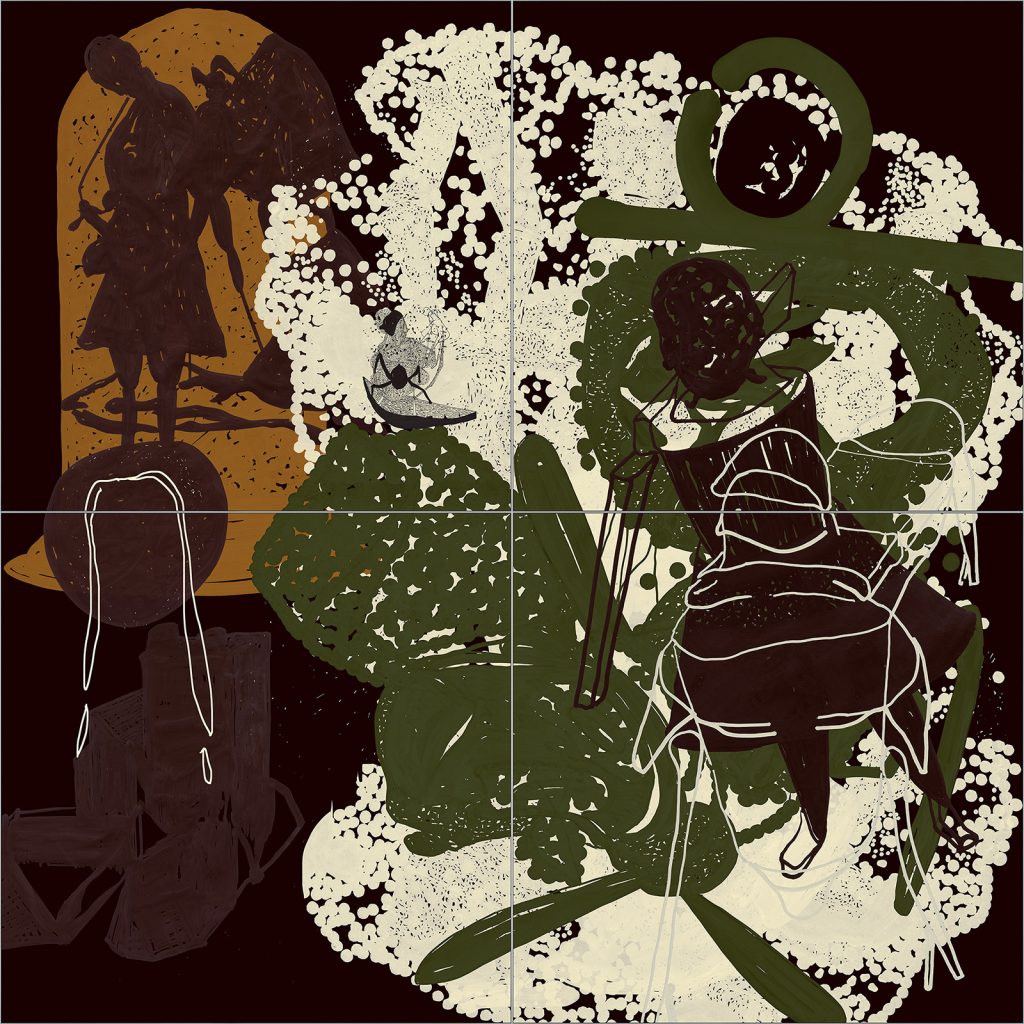
The name appears in the Prose Edda, but the figure remains strangely ephemeral. Njord also designates an asteroid, an oil field off the Norwegian coast and is the former name of an icebreaker. The artist provides no further pointers and therefore we are left to decide what we believe to perceive in the pictures. As was the case with earlier works, their reception is assigned to a guided, associative process, the complexity of which would appear to have been intensified. Accordingly, a look back at the genesis of these images throws light upon the specific nature of this art.
Dorfer’s socialisation occurred in a number of phases. His first conscious, visual experiences took place in India, where he spent part of his childhood. The plastic decoration covering the Hindu temples not only impressed him owing to its sculptural richness, but also because the design proved to be an interrelated entity, in which every component was mutually related. A further major influence then followed in the 1980s via the “Neuen Wilden”, with their mysterious, visual worlds charged with a private mythology (Harald Szeemann). Image machines, torsos, mills, machinery embedded in an agricultural context, cages or baskets, zoomorphism, boats, submarines and the repeated use of linkage elements such as paths and railways form the arsenal that Dorfer employs to equip his works. The fascination of these dark, black drawings, that demonstrate both sharp contours and shaded sections, emanates from the unpretentious simplification of shape, motifs that would appear to derive from dreams and largely technocratic representationalism.
The large drawings of the “Portes d´entrée” series from 1993 are exemplary of this stage of Dorfer’s development, which also possesses constitutive significance for his current creations. A similar role is played by several bronzes dating from 1996/97, which despite the precision of their presence and tactility, evoke a powerful sense of receptive insecurity, even if one can concede that these objects demonstrate a thoroughly iconic character.
The emotional expressiveness of the “Neuen Wilden” in the 1980s resulted from the rejection of the conceptual tendencies of the 70s. In turn, the repudiation of the (generally male) genius cult with its mythological charge led to the new painting of the 1990s, which in particular was concerned with self-reflection and via a new narration can be discovered up to the present day in virtually every form of artistic variant and expression. This has therefore already been the status quo for numerous decades and the sole question that remains is the weighting to be allocated to the individual currents, or in other words the degree to which a certain direction should be allotted attention at a specific point in time. Naturally, Dorfer’s oeuvre is also characterised by evolutionary phases, but these have developed organically, as in a flowing movement. His creative personality has thus grown parallel to, and in step with, the passage of time and therewith retained its integrity.
A further accentuation of ambiguity as an indication of possibilities within a temporal and spatial continuum, or also in a discontinuity, occurs in the period around 2000. However, there can be no certainty as to where the correlation is painted, or if it actually exists. Colour becomes a constitutive element, the impact of the images is friendlier and the tonality of the underlying melancholia is lightened to enter an almost major key. As Martin Stather first determined in the “doggod” catalogue from 2002, Dorfer has intensified the complexity of his figurative language. The layers of paint appear lie upon one another like transparent films and are in fact applied in overlapping phases.
This neither results in a forefront or a background, nor equally in a before or after. The reality of these images is a topic in itself and as Martin Stather states, “Naturally, the power, indeed the predominance, of the images that saturate us on a daily basis is to be mistrusted, as they compete with actuality in a manner that blurs the discrepancy between fiction and reality.” The discussion regarding the authenticity of images, which has arisen in the course of digitalisation, has also gained access to Dorfer’s visual world. Or could it be that it was already there from the very outset? Has not the relativity and relationality of reality been a constant central concern of his work? During his design transformation, Dorfer employs the possibilities offered by the new visual media, but this is not linked to a contentual turnaround. The message merely shifts with regard to its tonality, which in turn only gradually adjusts the basic tenure of this visual poetry.
In the years since the turn of the century, Dorfer’s artistic world has seen a great many changes. In a technical sense, his methodology is now similar to that of verre églomisé, in which the layers of paint are applied in sequence to the reverse side of a glass sheet. The drawn lines are subsequently resected out of the acrylic paint in the manner of a woodcut. These are extremely straightforward, highly traditional handicraft techniques, which are employed in the field of folk art, but they nevertheless produce results that from an optical standpoint closely resemble computer-generated images. Therefore both the practice and the motifs are everyday and can be simply described as details from reality. The fragmentary and rudimentary thus simultaneously necessitate the question as to what remains, or more specifically the original context, thereby immediately triggering a possible narrative. However, this only lasts until the next corner, where another story commences and superimposes itself upon its predecessor. This fragmented process thus results in continually new constellations.
With respect to the palimpsest phenomenon, Dieter Ronte once referred to the “chaos of new interrelationships” and should one wish to accept chaos as a meaningful element, during this process of abrading and superimposition a narration results, that is beyond a rational, narrative flow and detached from both time and place. The fundamental questions of life reside in the heart of these narrations, which in the storyboard: njord cycle are subjected to fresh compaction. The influences are multifarious and emanate from comics, mangas, films, graphic novels, street art and the extensive realms of the signet. In addition, quotations from contemporary art and art history are utilised. Links to the earliest etchings from Roman Scheidl, works from William Kentridge and Cara Walker, as well as the latest output from Stefan Glettler, can all be determined. Reference can also be made to Jonathan Borofsky, Kiki Kogelnik and the silhouette and spatter techniques. Nevertheless, in the final analysis, this imagery is based largely on individual intuition and a vocabulary developed over decades.
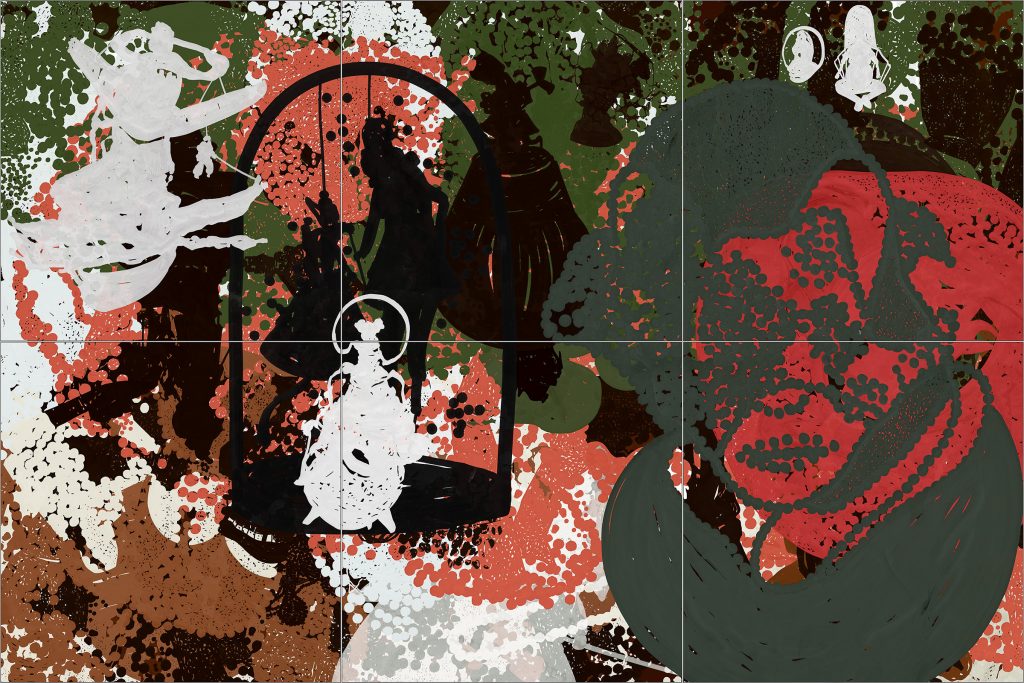
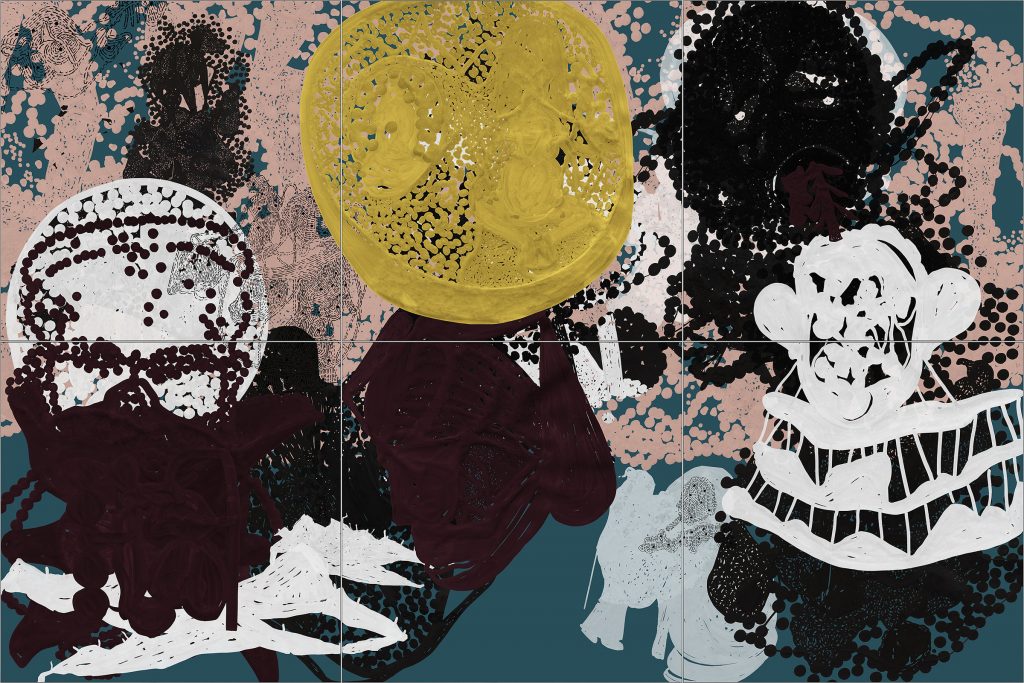
Innumerable drawings serve as raw materials, while simultaneously forming an image archive. These small sheets, which themselves are artworks possessing suggestive power contain inventions that are subsequently elaborated upon in meticulous fashion prior to their composition in a pictorial constellation. The graphic use of colour corresponds with the sequence of image levels, which are kept strictly flat and in the superimposition mostly form a narrow visual space. Dorfer edits the scanned motifs on a monitor, prepares a basic concept of the pictorial structure and then cements this together. With the ensuing return of the “genuine” verre églomisé to the analogue sphere, a further medial transfer occurs, whereby the ironic effect of a manually created, screen-like surface is entirely intentional. The works also continually demonstrate Dorfer’s “sensibility with regard to the optical systems of current forms of artistic manifestations” (Martin Hochleitner 2004). The final content results to an equal extent from the intuitive creative process and the concept.
The ideas in the first picture from the Njord series apparently derive from being airborne. However, instead of wings of gold, the propeller blades of an aircraft are to be seen. Moreover, a dancing figure in a tutu has an upper body not dissimilar to the three drums in Marcel Duchamp’s “Great Glass”, while the left arm (the right is hidden) consists of the outline of a table leg, which in the area of the shoulders turns into a type of yoke. The entire figure is overlapped by the white, linear contour of a further entity that is reminiscent of the 1100-year-old image of Odin, which is to be found in the Roskilde Viking Ship Museum in Denmark. Undefined, olive-green spheres emerge from the propeller nacelle and are also found in many other areas, where depending upon the zone, they possess differing colours. Above this green cloud, a small figure rides in a boat and its grey body would appear to be permeated by one of four (!) benign spiders. The pirouetting figure, which seems to have a latticework head, is framed by a green structure resembling an Egyptian Ankh cross, which in its upper rounding contains yet another cranial form. A coherent white field, which constitutes a cross between lacework and compressed spheres that apparently primarily possess intrinsic significance, forms the background of the entire central scene. At the centre of the left-hand third of the picture, which is the only area in which white, black, green and brown are joined by orange, is a scene played out in front of a proscenium arch. A long-eared creature strides behind a figure with a bowed head that appears to be carrying an unidentifiable object in both hands, which is lashed to its shoulders by a rope. A circular shape conceals the feet of the figure and if one construes this as being a head, then below it a stylised body can be seen. Two lines run from the unseen eyes and both terminate in droplet-like shapes. Are these tears? The lower figure could thus be a puppeteer operating the marionette in the upper section and should the receptive activity emanating from this picture fail to suggest figures, machinery or architectural forms would comprise the next associations.
Consideration of the first part of the series, which is representative of the whole, gives rise to considerable interpretative misgivings that culminate in numerous question marks, ifs, buts and maybe’s in combination with extensive use of the conjunctive. The works in the storyboard:njord series form their own cosmos, which every viewer will access in a different way. As is the case with truth, a singular reality is unobtainable. Everything is interconnected like the Hindu temples of Dorfer’s childhood, the genesis of his works and the current cycle. In Njord, Dorfer draws upon all the elements of his prior development. He is thereby fully in step with the times and offers an impressive demonstration of the capabilities of painting in the digital age.
